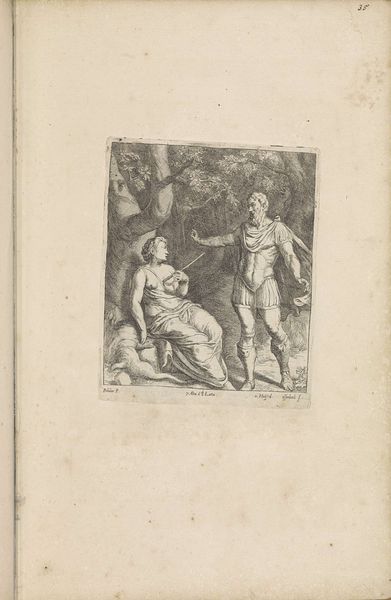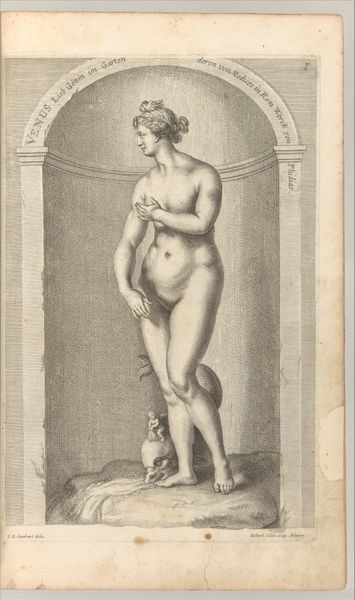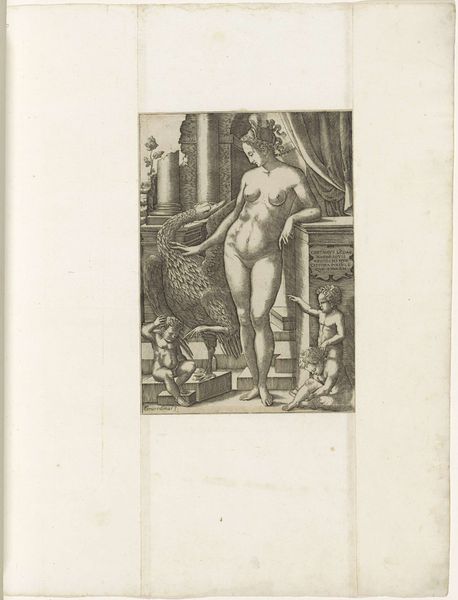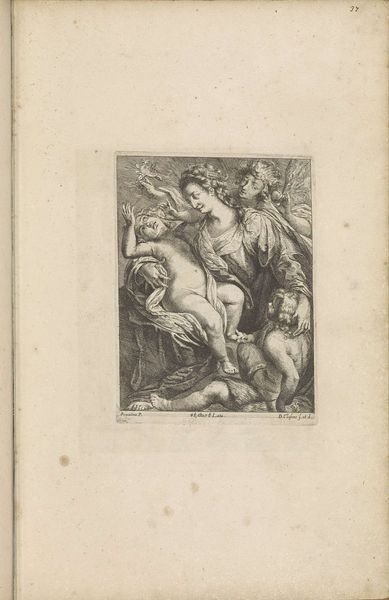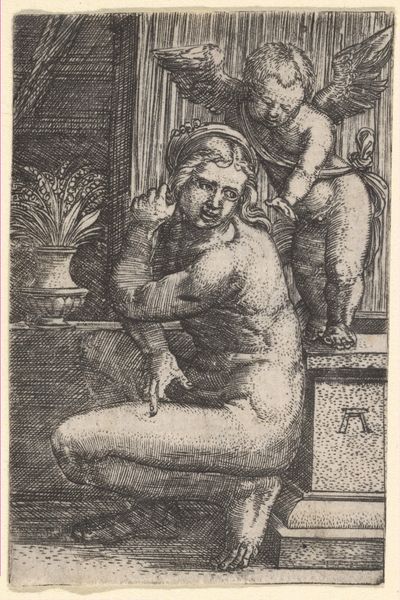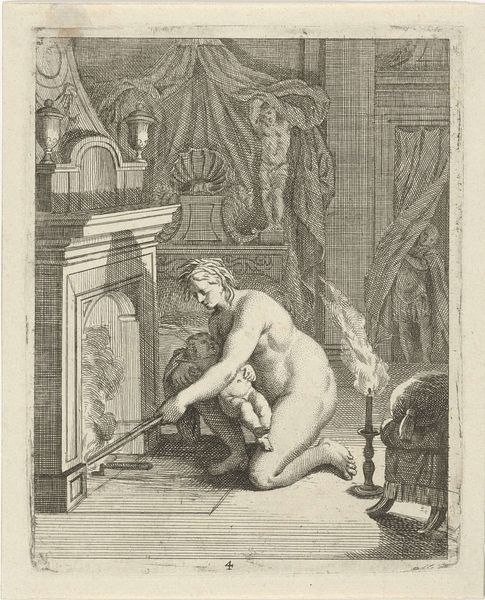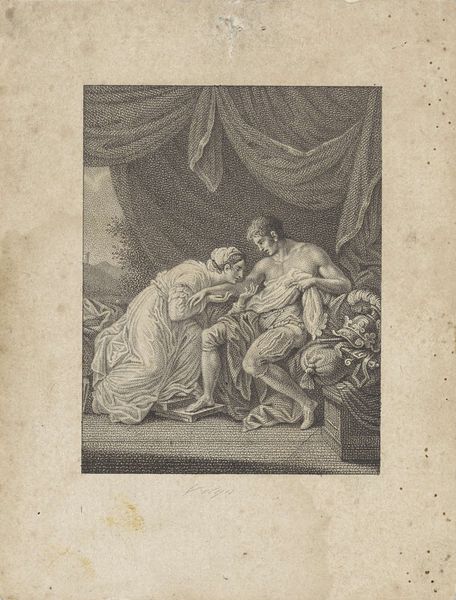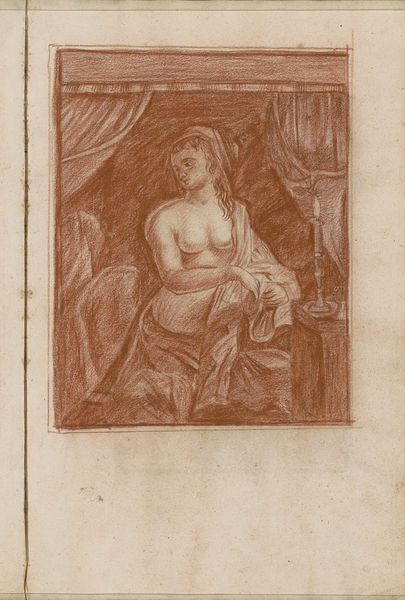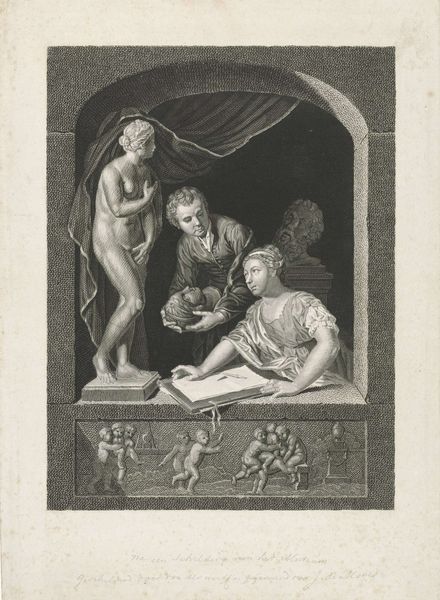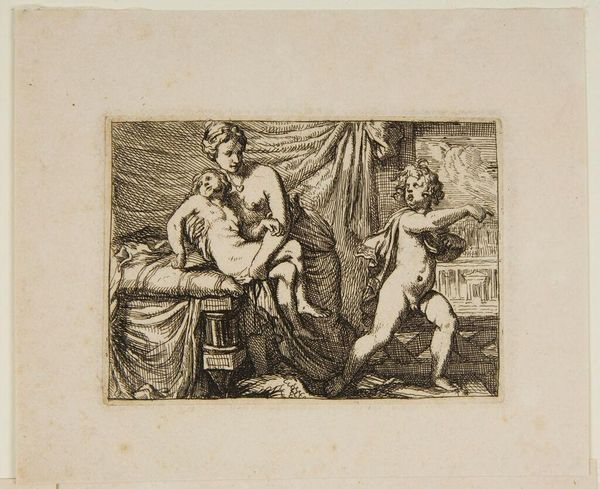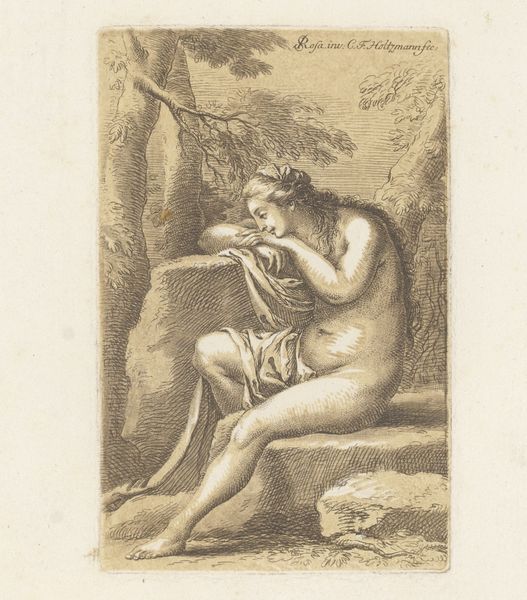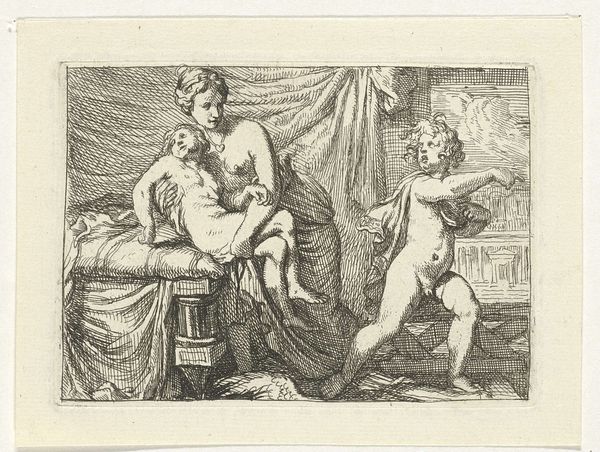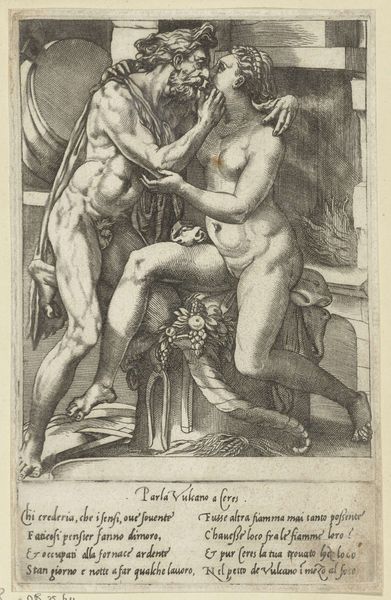
print, engraving
#
portrait
#
allegory
#
baroque
# print
#
old engraving style
#
figuration
#
line
#
history-painting
#
nude
#
engraving
#
erotic-art
Dimensions: height 232 mm, width 171 mm
Copyright: Rijks Museum: Open Domain
Curator: This engraving, dating back to about 1660, is entitled "Amor houdt Venus een spiegel voor" or "Cupid holds a mirror for Venus." It's currently held here at the Rijksmuseum, made by Lucas (II) Vorsterman. My initial impression is one of slightly awkward beauty, Venus’s pose feels almost staged. Editor: Yes, staged, certainly. Looking at the way the light falls, particularly on Venus's skin, there's a conscious emphasis on idealized form. Notice how Vorsterman uses line and shadow to create a sense of volume and depth, a classical strategy adapted for printmaking. How do you perceive the thematic elements at play here? Curator: Well, beyond the obvious allegorical context of Venus, the goddess of love and beauty, and Cupid, her son, there’s the more tangible element of the mirror itself. Its presence prompts reflections on vanity, self-perception, and the market for images of ideal beauty during this era. Who was consuming these images and what did their production mean to Vorsterman? Editor: Exactly. The composition emphasizes a sort of visual game between reality and reflection, a prevalent theme in Baroque art. It invites a comparison between Venus as she is and Venus as she perceives herself. Note how the crispness of line varies, softening around her figure while remaining sharp on the mirror’s frame, directing the eye. Curator: This contrast could reflect the commodification of beauty through the printing press. Consider that the paper used, the ink, and the engraving tools themselves were commodities, crafted, traded and sold to produce and disseminate such idealized images. These very images further fueled the demand for similar commodities in a circular dance of consumption and representation. Editor: True, and the way Vorsterman has structured the visual space here draws from art theories and Baroque philosophy that were current, a clear signal of erudition to his educated viewers. What do you find particularly striking? Curator: I'm captivated by the implications this print had. Its ability to bring classical allegories into bourgeois homes, fueling the growth of a culture steeped in these ideals but increasingly accessible through these repeatable artworks. It shifts our view of both Venus and Cupid from unattainable ideals into characters within a network of making and owning. Editor: I agree. Its elegance masks a deeper, layered interplay between visual representation and the evolving cultural ideas of its time.
Comments
No comments
Be the first to comment and join the conversation on the ultimate creative platform.
